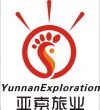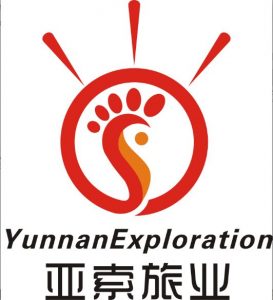
Gongshan County Dining
People who take a tour to Gongshan never forget to taste the food there. As a city having various Chinese ethnic minorities, Gongshan local food is different from the one in other places. All the foods in Gongshan feature local culture of ethnic minorities, and all the materials are from this place. It is the creation of local people and the work of human wisdom. This article will take you into the local life to discover the stunning food in this Yunnan city.All the foods talked about below are the representatives of local food and the essence of local food culture. They are also the top recommended ones to tourists who will be or have been in Gongshan.
Jiumenji(酒焖鸡)
Put the chicken and its bones into pieces, frying with oil, adding shochu heavily. Generally, about two or three Jin(斤) of each chicken. No salt, just some zanthoxylum simulans hance, then braise on the fire. The wine flowed freely with chicken, which is extremely delicious.
Baked Egg on a Stone Plate (石板烙蛋)
Baked egg, a traditional Dulong Food, is made in the following way. First, use 3 stones as a stove and make a fire in the stove. Then, place a thin stone plate on the stones. Next, scatter buckwheat flour on the plate and spread egg on the flour. The egg is ready when it becomes brown and crisp. The backed egg is easy to make and convenient to take. It is an inevitable food Dulong people treat their guests.
Baogumi(包谷米)
Baogumi(包谷米) is a kind of Ganliang(干粮) that eat by people who drive the horse. Eat with some water while you are walking. That's wonderful!
Meat Wine and Egg Wine(肉酒和蛋酒)
Meat wine and egg wine is well brewed wine, fresh with faint scent. It is a kind of dietetic foods, which has good curative effect on building up vital energy and nourishes the blood. So it is a favorite advanced nourishing food for the Nu Nationality.
Butter Tea(酥油茶)
Butter tea, also known as po cha (Tibetan:, Wylie: bod ja, "Tibetan tea"), cha süma (Tibetan:, Wylie: ja srub ma, "churned tea"), Mandarin Chinese: sūyóu chá (酥油茶) or gur gur in local Ladakhi terms, is a drink of the people in the Himalayan regions of Nepal, India and Bhutan and most famously, Tibet. It is also consumed in Bhutan and by Buddhist minorities in India. Traditionally, it is made from tea leaves, yak butter, water, and salt, however, given its wider availability and reduced cost, butter made from cow's milk is increasingly used.
Drinking butter tea is a regular part of Tibetan life. Before work, a Tibetan will typically enjoy several bowlfuls of this beverage, and it is always served to guests. Nomads are said to often drink up to 40 cups of it a day.[citation needed]Since butter is the main ingredient, butter tea provides plenty of caloric energy and is particularly suited to high altitudes. The butter may also help prevent chapped lips.

 7 Days GolfingTour
7 Days GolfingTour
 8 Days Group Tour
8 Days Group Tour
 8 Days Yunnan Tour
8 Days Yunnan Tour
 7 Days Shangri La Hiking
7 Days Shangri La Hiking
 11 Days Yunnan Tour
11 Days Yunnan Tour
 6 Days Yuanyang Terraces
6 Days Yuanyang Terraces
 11 Days Yunnan Tour
11 Days Yunnan Tour
 8 Days South Yunnan
8 Days South Yunnan
 7 Days Tea Tour
7 Days Tea Tour
 8 Days Muslim Tour
8 Days Muslim Tour
 12 Days Self-Driving
12 Days Self-Driving
 4 Days Haba Climbing
4 Days Haba Climbing
 Tiger Leaping Gorge
Tiger Leaping Gorge
 Stone Forest
Stone Forest
 Yunnan-Tibet
Yunnan-Tibet
 Hani Rice Terraces
Hani Rice Terraces
 Kunming
Kunming
 Lijiang
Lijiang
 Shangri-la
Shangri-la
 Dali
Dali
 XishuangBanna
XishuangBanna
 Honghe
Honghe
 Kunming
Kunming
 Lijiang
Lijiang
 Shangri-la
Shangri-la
 Yuanyang Rice Terraces
Yuanyang Rice Terraces
 Nujiang
Nujiang
 XishuangBanna
XishuangBanna
 Spring City Golf
Spring City Golf
 Snow Mountain Golf
Snow Mountain Golf
 Stone Mountain Golf
Stone Mountain Golf





